Hierarchy Organizational Chart Complete Guide
Edraw Content Team
Do You Want to Make Your Hierarchy Organizational Chart?
EdrawMax specializes in diagramming and visualizing. Learn from this article to know everything about hierarchy organiczational chart meaning and examples. Just try it free now!
In business and management, the organizational chart plays an important role. It shows the hierarchy within your company at all levels. In addition, these charts help you understand how your employees relate to one another.
There are many different organizational charts. The hierarchy organization chart is one of them. This chart can be further broken down for various businesses. Let's look at each example, so you can decide which works best for your company.

1. What Is a Hierarchy Organizational Chart
The term "hierarchy" is often used in business to describe the structure of organizations. A hierarchy organizational chart is a visual representation of this structure. In this chart, the senior executives are at the top, and lower-level employees are beneath them. This chart is helpful for businesses because it provides a straightforward way to see who reports to whom.
Some businesses use functional organizational charts, which group employees by department. Others use matrix organizational charts, which group employees by the project. Some use flat organizational charts, which have no hierarchy or departments. This type of chart is different from other organizational charts in many ways. First, it shows the relationships between different levels of management in an organization. Hierarchy organizational charts can be created for any organization. Whether a small business or a large corporation, you can create these charts for your business hierarchy. But they are typically used in large organizations with many levels of management.
Unlike other organizational charts, employees are grouped according to their function. This way, they are only liable to report to one supervisor or manager.
2. 5 Hierarchy Organizational Chart Examples
Example 1: Basic Hierarchy Organizational Chart
A simple hierarchy is a type of organizational structure with three levels. These include management, production, and operations. These three levels make up the hierarchical structure of a company.
Management oversees operations and production. Production creates products or services. And the operations department ensures that production and management run smoothly. Each level has one supervisor or manager above it this type of organization. This supervisor handles employees who work under them.
For example, the president of a company would oversee the vice presidents. Vice presidents will then manage managers who supervise other employees. The size of an organization determines how many layers exist within its hierarchy. Large organizations have more layers, while small ones only have two or three layers of structure.
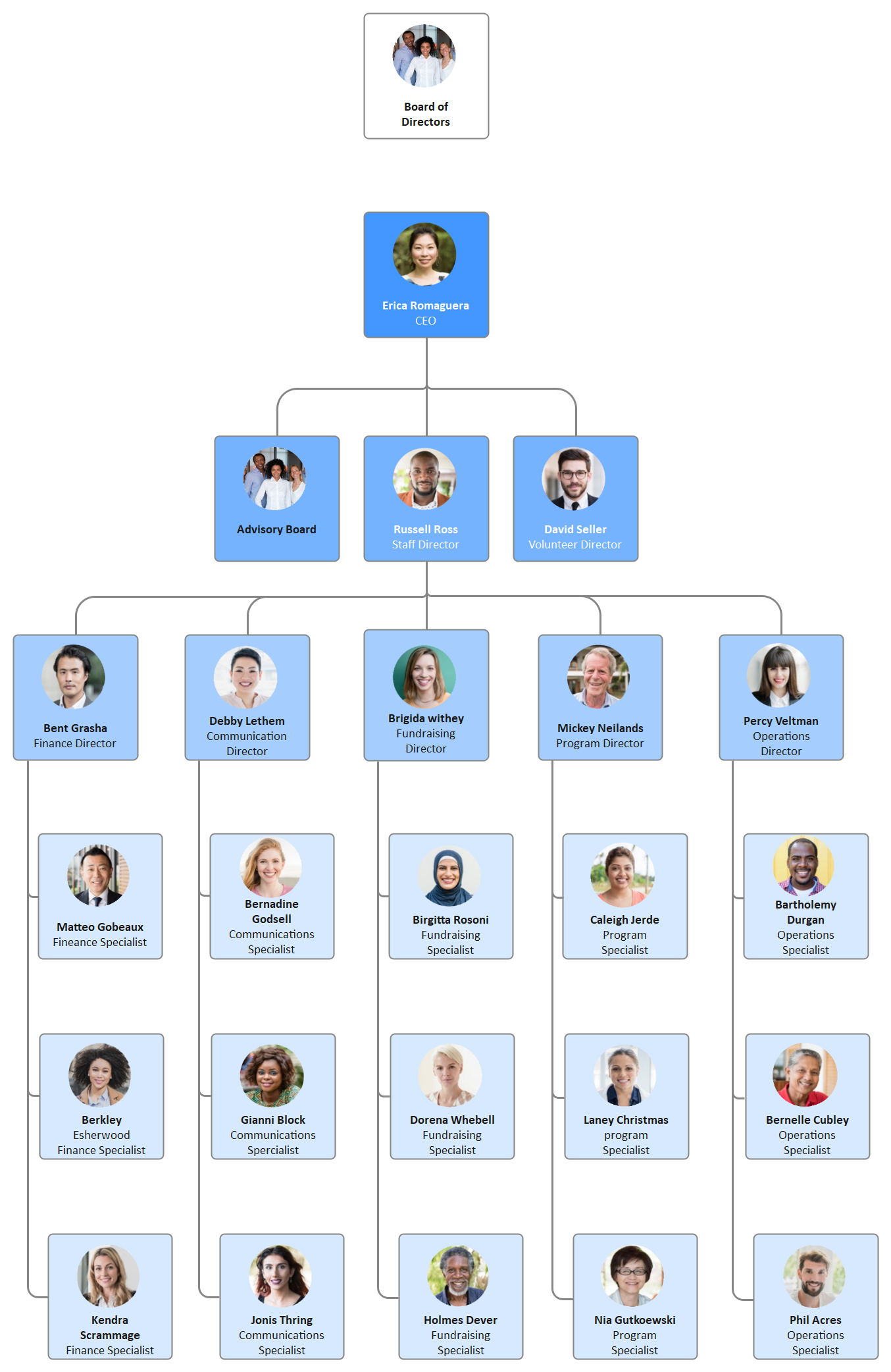
Example 2: Medical Hierarchy Chart
This is a hierarchy chart for medical care institutions. It includes all levels, from the executive director to health deans and department chairpersons. Deans are qualified doctors and managers who have completed their residency in a specific area of medicine. These doctors oversee all medical affairs of the institution.
Directors are in charge of administrative and medical tasks. These tasks include finances, development, and safety. Directors fall under the direct supervision of the dean and are liable to report to them.
Then there are department chairpersons who can be specialists or general practitioners. These doctors provide diagnosis and treatment for illness or injury. Specialists are divided into multiple categories according to their specialization major. These majors include dermatology, pathology, pharmacology, neurology, radiology, and many more.
The nurses include clinical nurse specialists, family practitioners, and certified nurse midwives. Other workers on this level include physical therapists and general physicians. They are responsible for helping people recover from injuries or illnesses.
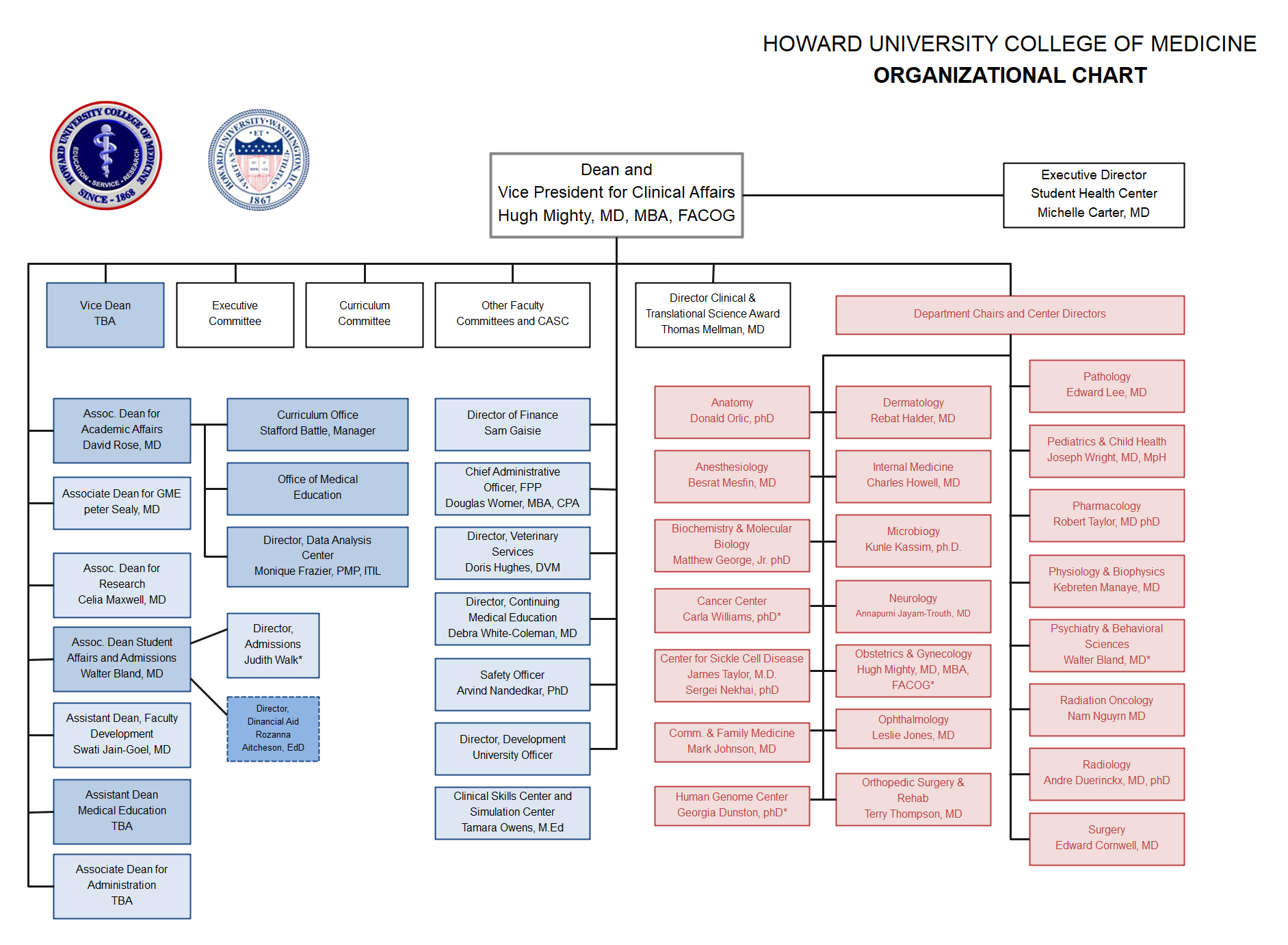
Example 3: Business Hierarchy Chart
The business hierarchy chart is based on three levels: administrative, executive, and operational. The administrative level is a higher level position and often oversees other positions. This level handles other levels beneath it. It comprises the company chairman, president, chief technical officer, CEO, and senior manager. After this level, there are company executives. This includes managers and senior officers of all departments.
Business analystics, technical managers, and project leaders are all part of this executive level. These executives are responsible for implementing strategies set by executives or administrators. They are also responsible for planning, decision-making, and overseeing operational areas. The last level in the business hierarchy chart is termed the operational level. This lower-level position typically starts at the bottom of an organization. Trainees and working technicians are all part of this level.
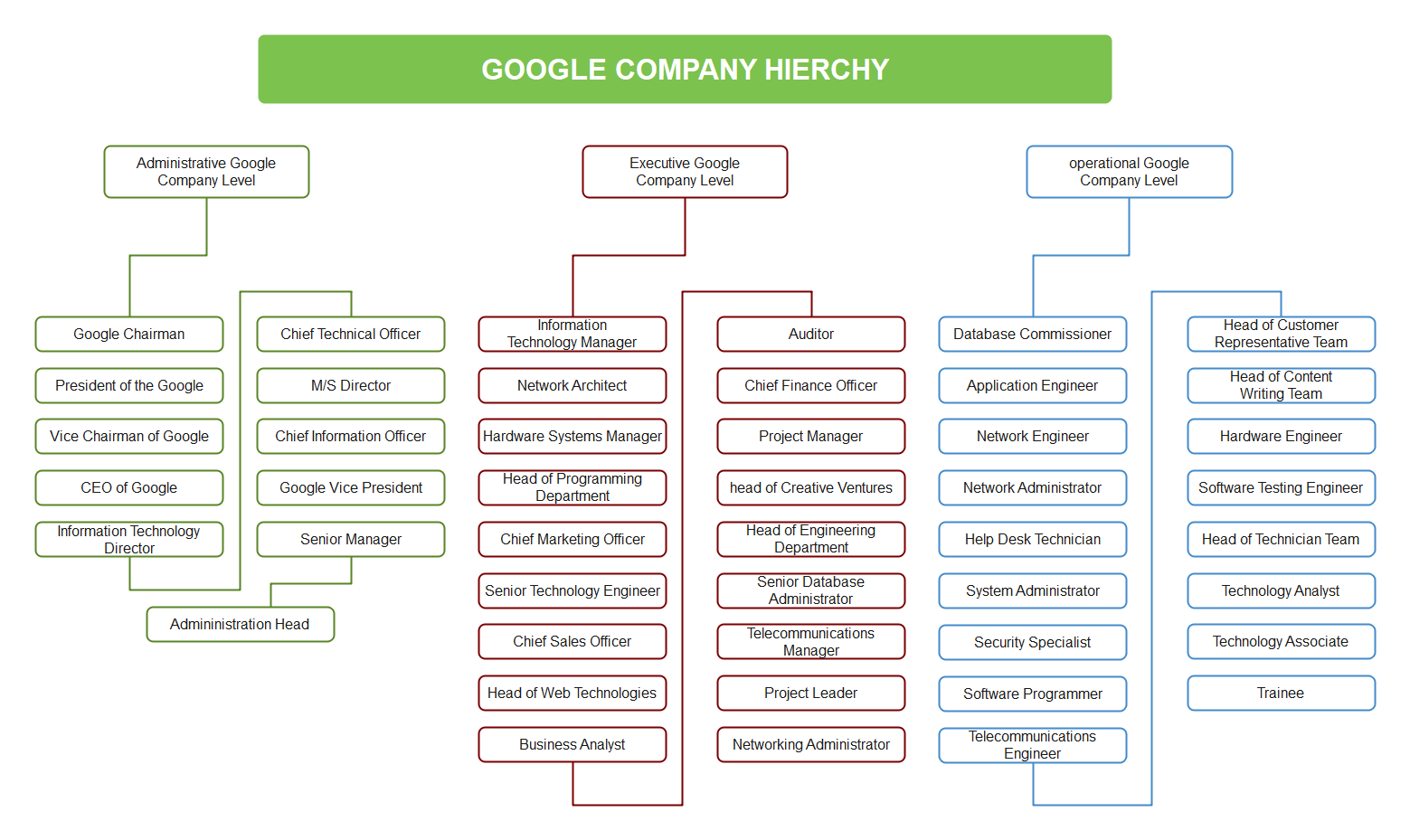
Example 4: Hierarchical Organizational Chart
A hierarchical chart is a type of organizational chart that shows its management structure. It is also known as an organization tree. In this organizational chart, one person is shown on top. After this, progressively lower groups follow.
For example, a corporate hierarchy chart for a business has the CEO listed first and then other managers below them. But, if many shareholders operate the company, they come on top of the structure. Then there is a board of directors after the CEO. Within each director, there are different departments of the organization. It includes administration, customer services, sales, and strategies. Some organizations further divide these departments to ensure efficiency till the bottom level.
However, the chart always starts with the CEO if shareholders are not applicable. This is because the CEO will oversee all the matters of the company. Also, he will be liable for making all the decisions for the company's future.
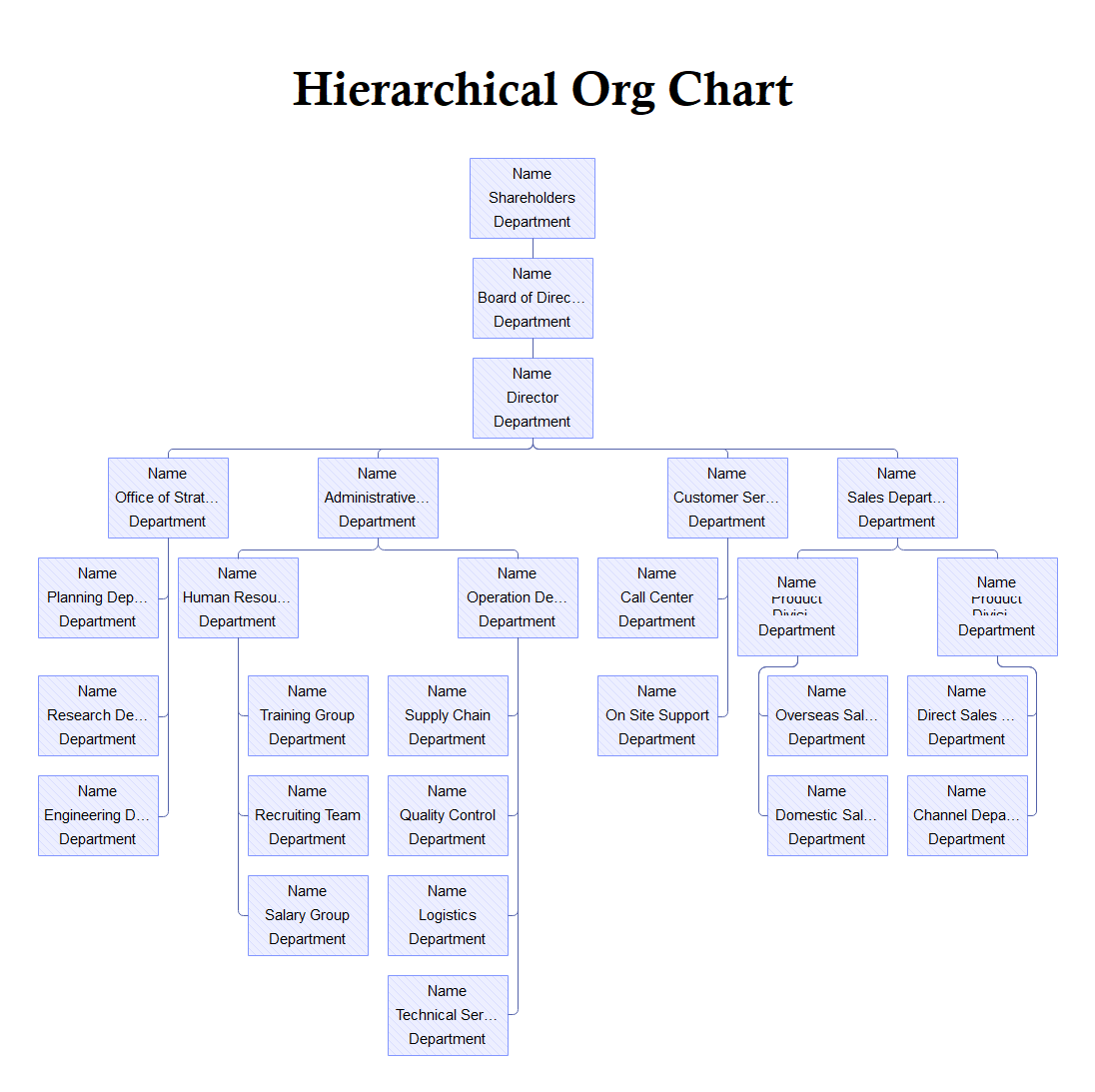
Example 5: Engineering Company Hierarchy Chart
This is also an example of a company hierarchy chart. It consists of three organizational levels. The first is the administrative level. This level includes the chairman, CEO, president, vice president, and engineering officers. If there are multiple departments, there will be one officer from each department.
The Chief Executive Officer (CEO) and all administrative staff are at the top level. These people have the final say over all company decisions. The second level consists of managers from all engineering departments and one head of engineering.
Next comes the operational engineering level. This level includes engineers from all departments, help desk staff, and internees. They are liable to report managers. And managers are liable to report administrative officers. Each level in this organizational chart reports to someone at a higher level.
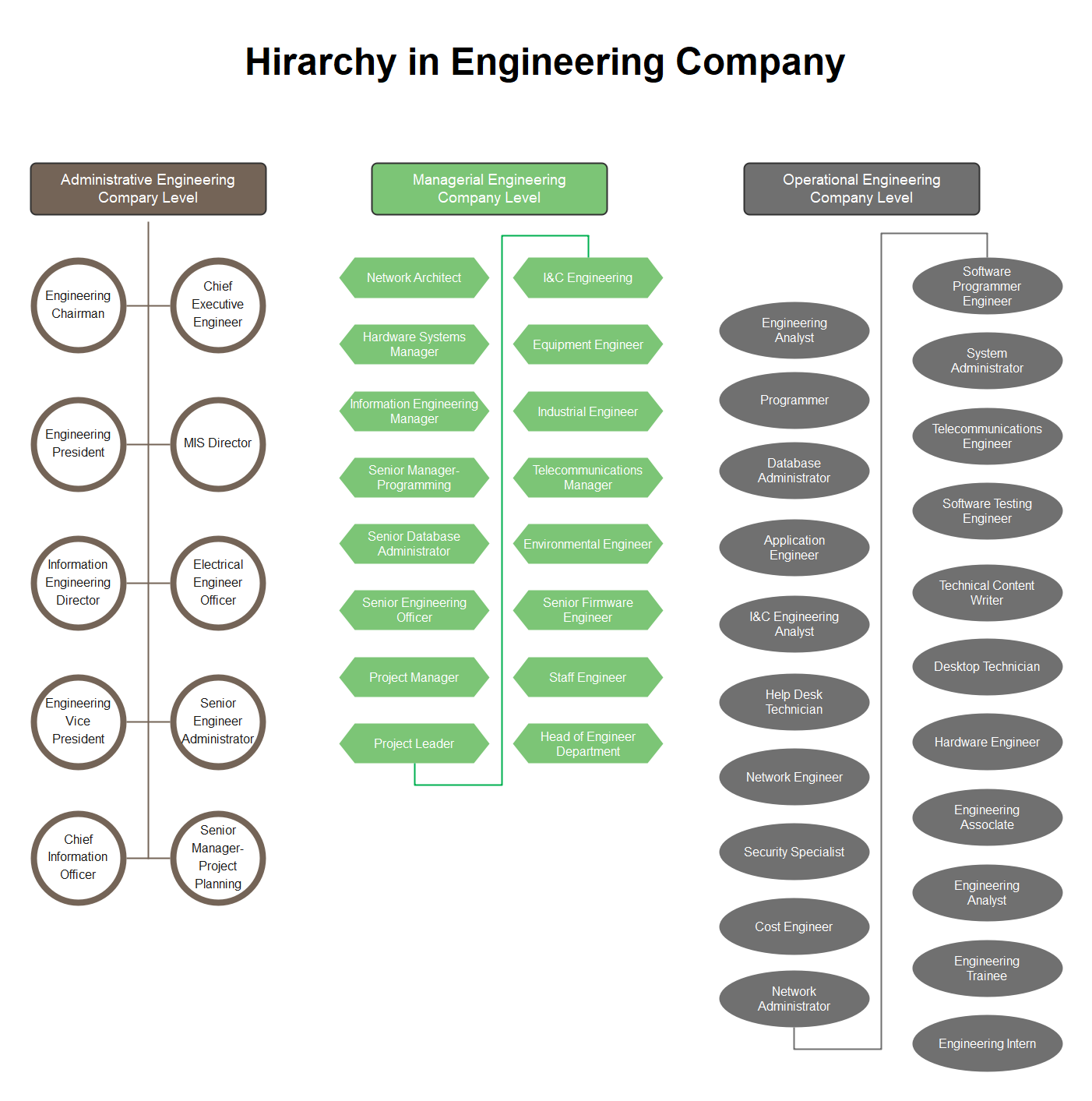
3. How To Plan and Draw a Hierarchy Organizational Chart
Creating an organizational chart can seem daunting, but it doesn't have to be. All you need to do is do some planning and careful drawing. After this, you can easily create a hierarchy organizational chart. This chart will then be a valuable tool for your company.
Creating an organizational chart can seem daunting, but it doesn't have to be. All you need to do is do some planning and careful drawing. After this, you can easily create a hierarchy organizational chart. This chart will then be a valuable tool for your company.
It includes the organizational staff, including all board members and company employees. After you have gathered this information, it's time to divide all employees into different departments. You will then allocate department heads.
Here are a few tips on how to plan and draw a hierarchy organizational chart:
- First, decide what level of detail you need to include in your chart. For example, do you need to show the relationships between different departments or different teams
- Next, determine the best way to arrange the information. A common way to do this is to start with the highest management level. Then, after you have sorted that level, you can work until the last employee.
There are multiple online tools where you can make your hierarchy chart. You will also find several readymade chart templates. EdrawMax is one tool that will help you develop a hierarchical chart in no time.
4. Conclusion
Organizational charts are a great way to visualize the structure of an organization. They can be used to show the relationships between different departments. Also, they will define different levels of management in your company. Hierarchical charts can be helpful in the planning and decision-making process. Business leaders and human resource departments can also use them to determine new job roles. It will then help them hire these employees for these roles. Changing and updating the hierarchical chart now and then is recommended. Such as when employees' positions change or someone leaves the company.
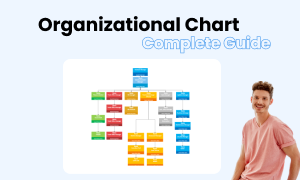
Organizational Chart Complete Guide
Check this complete guide to know everything about organizational chart, like organizational chart types, and how to make an organizational chart.
You May Also Like
Business Plan Flowchart Complete Guide
Knowledge
Accounting Flowchart Complete Guide
Knowledge



